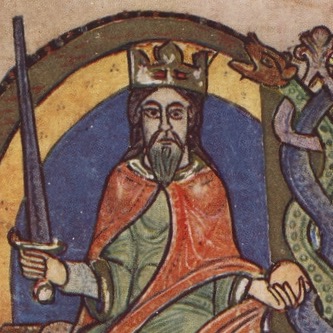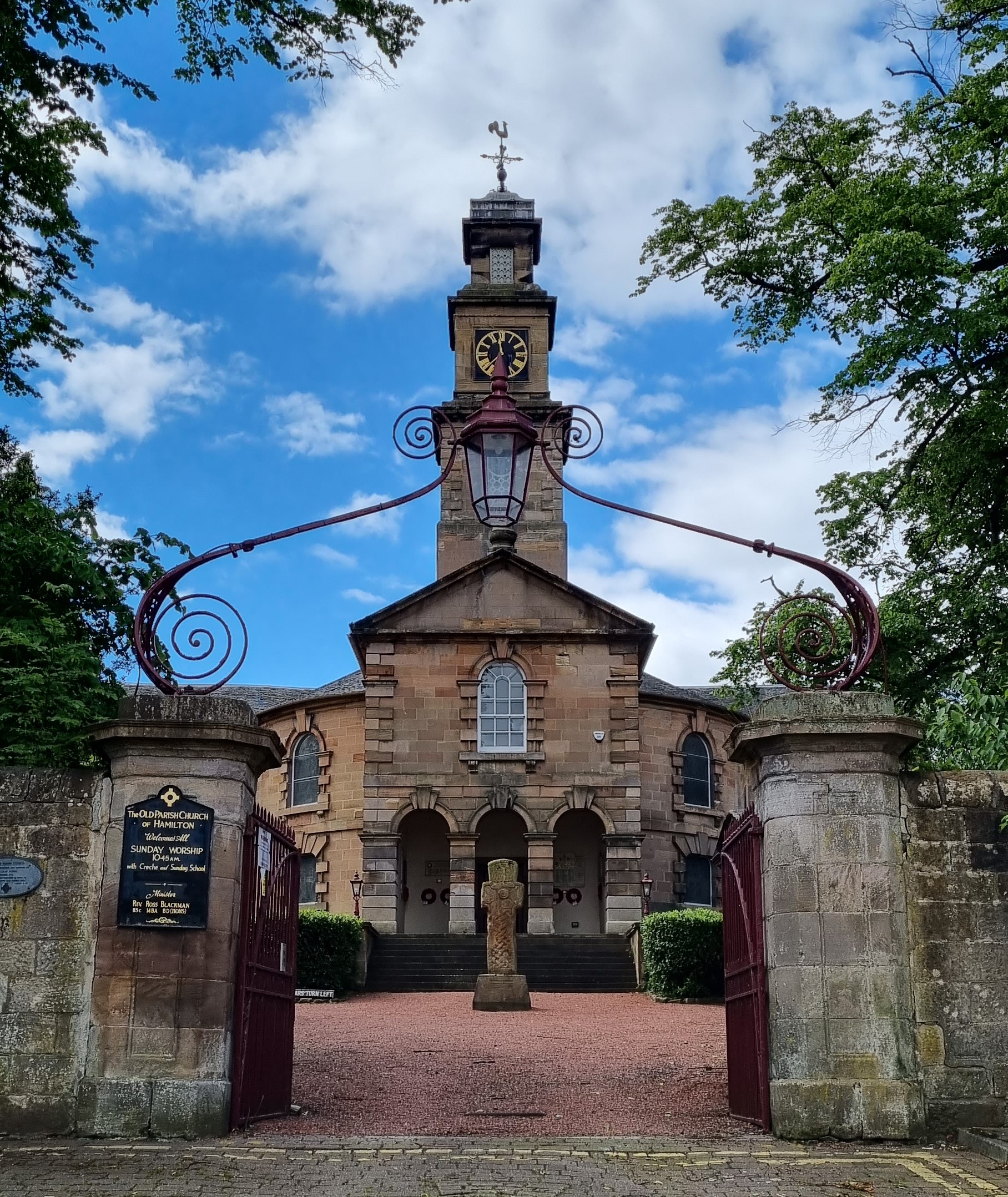|
Ballantine And Gardiner
Ballantine and Gardiner was a Scottish manufacturer of stained-glass windows, one of several names the company worked under.James Ballantine and Son (about 1828 - about 1925) – Stained Glass in Wales The business was founded in by (1806–1877) and George Allan as Ballantine and Allan. They began making stained glass in the 1830s. In 1843, they won a competition to design windows for the new |
St Serf's Church, Dunning
__NOTOC__ St Serf's Church in the Scottish village of Dunning, Perth and Kinross is a Category A listed building largely dating to the early 19th century, but incorporating a 12th-century tower. History The church dates to the 12th century, and has a forestair leading to the east gallery entrance that is dated 1687 on the lintel. The building was extensively remodelled by Alexander Bowie between 1808 and 1810. Stained-glass windows by Ballantine and Son and Ballantine and Gardiner were added between 1899 and 1910. The churchyard includes early stones dated 1623 and 1624. The church was in use until 1972 but is now in the care of Historic Scotland. It is visible to the public at no charge but under supervision. The building was used in the filming of the 2000 Scottish film ''Complicity''. Dupplin Cross The 9th-century Dupplin Cross is inside the church; it was placed there in 2002 after a protest to Historic Scotland at its removal from its original home in Dunning. See als ... [...More Info...] [...Related Items...] OR: [Wikipedia] [Google] [Baidu] |
Glasgow
Glasgow ( ; sco, Glesca or ; gd, Glaschu ) is the most populous city in Scotland and the fourth-most populous city in the United Kingdom, as well as being the 27th largest city by population in Europe. In 2020, it had an estimated population of 635,640. Straddling the border between historic Lanarkshire and Renfrewshire, the city now forms the Glasgow City Council area, one of the 32 council areas of Scotland, and is governed by Glasgow City Council. It is situated on the River Clyde in the country's West Central Lowlands. Glasgow has the largest economy in Scotland and the third-highest GDP per capita of any city in the UK. Glasgow's major cultural institutions – the Burrell Collection, Kelvingrove Art Gallery and Museum, the Royal Conservatoire of Scotland, the Royal Scottish National Orchestra, Scottish Ballet and Scottish Opera – enjoy international reputations. The city was the European Capital of Culture in 1990 and is notable for its architecture, cult ... [...More Info...] [...Related Items...] OR: [Wikipedia] [Google] [Baidu] |
Scottish Stained Glass Artists And Manufacturers
Scottish usually refers to something of, from, or related to Scotland, including: *Scottish Gaelic, a Celtic Goidelic language of the Indo-European language family native to Scotland *Scottish English *Scottish national identity, the Scottish identity and common culture *Scottish people, a nation and ethnic group native to Scotland *Scots language, a West Germanic language spoken in lowland Scotland *Symphony No. 3 (Mendelssohn), a symphony by Felix Mendelssohn known as ''the Scottish'' See also *Scotch (other) *Scotland (other) *Scots (other) *Scottian (other) *Schottische The schottische is a partnered country dance that apparently originated in Bohemia. It was popular in Victorian era ballrooms as a part of the Bohemian folk-dance craze and left its traces in folk music of countries such as Argentina ("chotis"Span ... * {{disambiguation Language and nationality disambiguation pages ca:Escocès ... [...More Info...] [...Related Items...] OR: [Wikipedia] [Google] [Baidu] |
St Cuthbert's Church, Edinburgh
The Parish Church of St Cuthbert is a parish church of the Church of Scotland in central Edinburgh. Probably founded in the 7th century, the church once covered an extensive parish around the burgh of Edinburgh. The church's current building was designed by Hippolyte Blanc and completed in 1894. St Cuthbert's is situated within a large churchyard that bounds Princes Street Gardens and Lothian Road. A church was probably founded on this site during or shortly after the life of Cuthbert. The church is first recorded in 1128, when David I of Scotland, David I granted it to Holyrood Abbey. At that time, the church covered an extensive parish, which was gradually reduced until the 20th century by the erection and expansion of other parishes, many of which were founded as Chapel of ease, chapels of ease of St Cuthbert's. St Cuthbert's became a Protestant church at the Scottish Reformation in 1560: from after the Reformation until the 19th century, the church was usually called the West ... [...More Info...] [...Related Items...] OR: [Wikipedia] [Google] [Baidu] |
Francis Hindes Groome
Francis Hindes Groome (30 August 1851 – 24 January 1902), son of Robert Hindes Groome, Archdeacon of Suffolk, was a writer and foremost commentator of his time on the Romani people, their language, life, history, customs, beliefs, and lore. Life Groome was born at his father's rectory in Monk Soham, Suffolk, on 30 August 1851. He was educated at Ipswich School, where his lifelong interest in Romanies was sparked, and continued at Oxford University. He left Oxford without taking a degree, spent some time at Göttingen, and then for 6 years lived with Romani at home and abroad. He married a woman of Romani blood, Esmeralda Locke, in 1876 and settled down to regular literary work in Edinburgh. Groome contributed generously and on a variety of subjects to such publications as the ''Encyclopædia Britannica'', the ''Dictionary of National Biography'', ''Blackwood's Magazine'', the ''Athenaeum'', ''Johnson's Universal Cyclopedia'', ''The Bookman'', ''Chambers' Biographical Dictio ... [...More Info...] [...Related Items...] OR: [Wikipedia] [Google] [Baidu] |
Perth, Perth And Kinross
Perth (locally: ; gd, Peairt ) is a city in central Scotland, on the banks of the River Tay. It is the administrative centre of Perth and Kinross council area and the historic county town of Perthshire. It had a population of about 47,430 in 2018. There has been a settlement at Perth since prehistoric times. It is a natural mound raised slightly above the flood plain of the Tay, at a place where the river could be crossed on foot at low tide. The area surrounding the modern city is known to have been occupied ever since Mesolithic hunter-gatherers arrived there more than 8,000 years ago. Nearby Neolithic standing stones and circles date from about 4,000 BC, a period that followed the introduction of farming into the area. Close to Perth is Scone Abbey, which formerly housed the Stone of Scone (also known as the Stone of Destiny), on which the King of Scots were traditionally crowned. This enhanced the early importance of the city, and Perth became known as a "capital" ... [...More Info...] [...Related Items...] OR: [Wikipedia] [Google] [Baidu] |
St John's Kirk
St John's Kirk is a church in the Scottish city of Perth, Perth and Kinross. Of Church of Scotland denomination, it is located in St John's Place, just southeast of the city centre. It stands on the former site of a church dating to 1126. Today's structure, built around 1448, is a Category A listed building.ST JOHN'S KIRK, KIRKSIDE, ST JOHN'S PLACE, ST JOHN STREET - The church is most noted for being the site of John Knox's 1559 sermon against ido ... [...More Info...] [...Related Items...] OR: [Wikipedia] [Google] [Baidu] |
Robert Alexander Bryden
Robert Alexander Bryden (7 July 1841 – 14 April 1906) was a Scottish architect, prominent in the second half of the 19th century. He was mainly active in the west of Scotland, where he designed schools, churches and municipal buildings. Early life Bryden was born in Glasgow, Scotland, on 7 July 1841, the son of Robert Bryden and Margaret Ramage.Robert Alexander Bryden at ScottishArchitects.org.uk He was educated at Arthur's Academy in , , and Kirkcaldy Grammar School ... [...More Info...] [...Related Items...] OR: [Wikipedia] [Google] [Baidu] |
Dunoon Burgh Hall
Dunoon Burgh Hall is a municipal structure in Argyll Street, Dunoon, Scotland. The structure, which is used as an events venue, is a Category B listed building. History Following significant population growth, largely associated with the fishing industry, the area became a police burgh in 1868. In this context, the new police commissioners decided to procure a burgh hall: the site they selected was a piece of open land known as Gallowhill which was donated to the burgh by the local laird, James MacArthur Moir. The foundation stone for the new building was laid with full masonic honours on 30 August 1873. It was designed by Robert Alexander Bryden in the Scottish baronial style, built in schist stone at a cost of £4,000 and was officially opened on 25 June 1874. (Bryden also designed the adjacent and now-demolished St Cuthbert's Church around the same time.) The design involved an asymmetrical main frontage with six bays facing onto Argyll Street; the left-hand section, which ... [...More Info...] [...Related Items...] OR: [Wikipedia] [Google] [Baidu] |
Hamilton Old Parish Church
Hamilton Old Parish Church is a Church of Scotland parish church serving part of the Burgh of Hamilton, Scotland, Hamilton in South Lanarkshire, Scotland. It is notable for its Georgian architecture and the church and grounds are Category A listed. History The church was built between 1729 and 1732. It replaced the parish's 15th-century Collegiate Church of Hamilton, Collegiate Church, which was located at another site, close to the mausoleum in Strathclyde Park. The church is an unusual, largely circular design. The church was built to a design by William Adam (architect), William Adam. It is said to be the only church building to have been designed by him. The interior was recast in 1926. The church contains a memorial to four covenantors executed in Edinburgh in 1666. The church contains a stained glass window by Ballantine and Gardiner, representing Jesus, Martha and Mary that was fitted in 1876 in memory of Mrs James Stevenson.Ordnance Gazetteer of Scotland, Francis H Groome, ... [...More Info...] [...Related Items...] OR: [Wikipedia] [Google] [Baidu] |
London
London is the capital and largest city of England and the United Kingdom, with a population of just under 9 million. It stands on the River Thames in south-east England at the head of a estuary down to the North Sea, and has been a major settlement for two millennia. The City of London, its ancient core and financial centre, was founded by the Romans as '' Londinium'' and retains its medieval boundaries.See also: Independent city § National capitals The City of Westminster, to the west of the City of London, has for centuries hosted the national government and parliament. Since the 19th century, the name "London" has also referred to the metropolis around this core, historically split between the counties of Middlesex, Essex, Surrey, Kent, and Hertfordshire, which largely comprises Greater London, governed by the Greater London Authority.The Greater London Authority consists of the Mayor of London and the London Assembly. The London Mayor is distinguished fr ... [...More Info...] [...Related Items...] OR: [Wikipedia] [Google] [Baidu] |
Sandyford Henderson Church
Sandyford () is a suburb of Dublin, located in Dún Laoghaire–Rathdown, Ireland. Sandyford Business District makes up much of the suburb and encompasses 4 business parks: Sandyford Business Park, Stillorgan Business Park, Central Park and South County Business Park. Some of the multinational companies based in the area include Google, Facebook, Microsoft and AIB. Location and access Sandyford is part of the Dáil Éireann constituency of Dublin-Rathdown. Sandyford village (sometimes referred to in Irish as ''Taobh na Coille'', meaning 'woodside', the townland in which it is situated) is 9 km south of Dublin city centre, just south of the M50 motorway, accessed from the R117 road or M50 junctions 13 and 14, while ''Sandyford Business District'' is just north of the motorway. An Aircoach service links the area with Dublin Airport 24 hours a day. Dublin Bus routes 11, 44, 44B, 47, 116 and 118 link the area to other parts of the city. Luas The Luas '' Green Line'' was ... [...More Info...] [...Related Items...] OR: [Wikipedia] [Google] [Baidu] |








